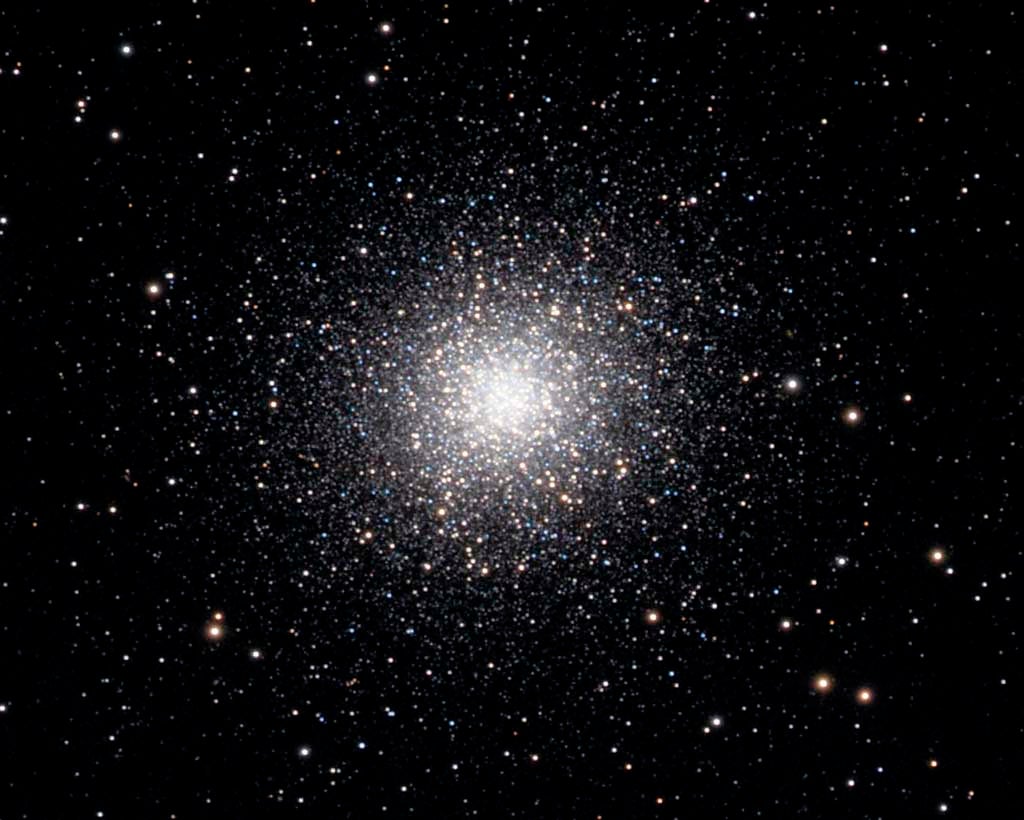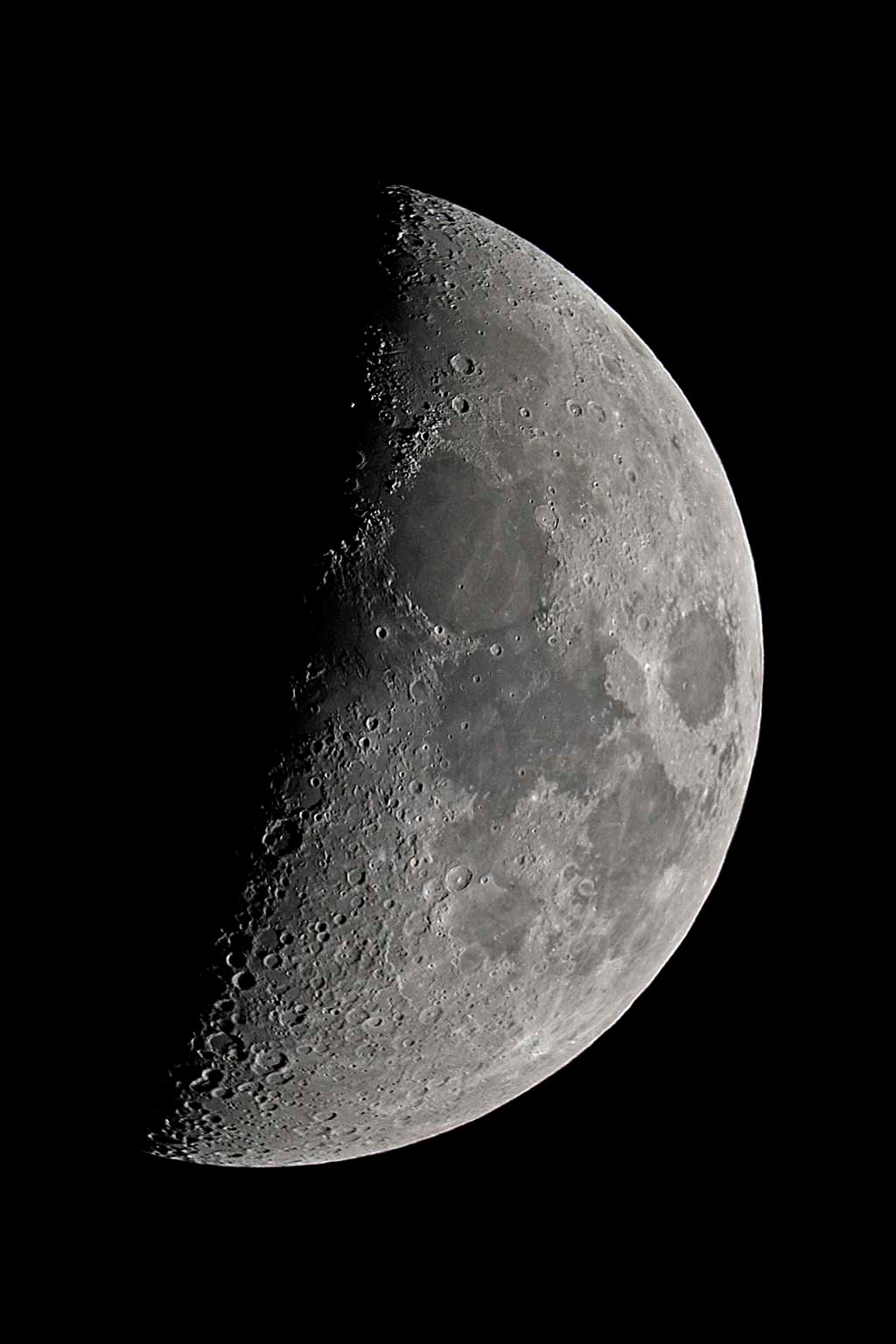I’m an avid baseball fan, which is why one of my favorite cable TV channels is the MLB Network. During the current offseason, a staple of the MLB Network has been a program called Prime 9. This half-hour countdown show highlights the best nine from a variety of baseball categories — pitchers, managers, World Series games, and more.
After watching a recent Prime 9 episode, I thought it would be fun to write an astronomy-themed edition — my “Prime 9” public star party targets.
9) The Andromeda Galaxy (M31). Leading off is what most deep-sky observers consider the finest star city for backyard scopes — the Andromeda Galaxy. It’s the nature of the beast and not its visual appearance that earns M31 a spot on my Prime 9 list. Unless your star party attendees know what a galaxy is, the sight of an oval smudge of light will hardly impress. If, however, they know that this oval smudge is in reality the nucleus of a galaxy populated by hundreds of billions of stars, a mundane sight becomes mind-boggling.
8) The Ring Nebula (M57). Like the Andromeda Galaxy, the Ring Nebula is a mere curiosity to the uninitiated observer — perhaps a bit more visually intriguing due to its smoke-ring appearance through a telescope. M57 makes my Prime 9 star party lineup because it’s a classic example of a planetary nebula. The “wow” factor kicks in when a novice observer realizes that the “smoke ring” is a 3-trillion-mile-wide (5 trillion kilometers) expanding mass of gas ejected by a dying star some 20,000 years ago — and that the Sun could end up like this one day, too.
After watching a recent Prime 9 episode, I thought it would be fun to write an astronomy-themed edition — my “Prime 9” public star party targets.
9) The Andromeda Galaxy (M31). Leading off is what most deep-sky observers consider the finest star city for backyard scopes — the Andromeda Galaxy. It’s the nature of the beast and not its visual appearance that earns M31 a spot on my Prime 9 list. Unless your star party attendees know what a galaxy is, the sight of an oval smudge of light will hardly impress. If, however, they know that this oval smudge is in reality the nucleus of a galaxy populated by hundreds of billions of stars, a mundane sight becomes mind-boggling.
8) The Ring Nebula (M57). Like the Andromeda Galaxy, the Ring Nebula is a mere curiosity to the uninitiated observer — perhaps a bit more visually intriguing due to its smoke-ring appearance through a telescope. M57 makes my Prime 9 star party lineup because it’s a classic example of a planetary nebula. The “wow” factor kicks in when a novice observer realizes that the “smoke ring” is a 3-trillion-mile-wide (5 trillion kilometers) expanding mass of gas ejected by a dying star some 20,000 years ago — and that the Sun could end up like this one day, too.
7) Albireo (Beta [β] Cygni). Albireo is arguably the premier double star in the northern sky. The sight of this colorful gold and blue stellar partnership will delight and astonish anyone who previously assumed that all stars are white and travel through space alone like the Sun.
6) The Pleiades (M45). There may be more impressive open star clusters than the Pleiades, but none is as familiar to the general public as the “Seven Sisters.” When star party attendees view the Pleiades with naked eye, binoculars, and then telescope, they get to compare the capabilities of these three observing modes. Lesson: Some sky objects are better seen with the unaided eye and binoculars than through the eyepiece of a huge gazillion-power telescope.
5) The Orion Nebula (M42). Here’s a star party target that inspires both eye and mind. While the eye sees majestic wreaths of luminous gases, the mind contemplates the wonder of stellar birth. The Trapezium — the four brightest members of a clutch of stellar nestlings immersed in the nebulosity — is an added bonus. It forms the rough outline of a baseball diamond. Who says there’s no connection between astronomy and our national pastime?
4) The Hercules Cluster (M13). The ranking of M13 on this list depends on telescope aperture. Viewed through small scopes, M13 is another fuzzy curiosity like M31 and M57. Through a 6-inch or larger scope and high magnification, however, M13 assumes a place as the finest deep-sky sight on my Prime 9 list. Even individuals who are clueless as to the nature of a globular star cluster will be mesmerized by the spectacle of this stellar swarm — a spoonful of sparkling sugar dropped on a sheet of black velvet.
3) Jupiter. The heavy hitters in my Prime 9 lineup are all members of the solar system. It’s not that deep-space objects don’t merit attention at public star parties, but the top three are in-your-face dazzlers familiar to even the most astronomically illiterate. Jupiter comes in at number 3, not so much for the appearance of the planet itself as for the eye-catching array of “stars” (Jupiter’s four Galilean moons) that stretches out from its sides.
5) The Orion Nebula (M42). Here’s a star party target that inspires both eye and mind. While the eye sees majestic wreaths of luminous gases, the mind contemplates the wonder of stellar birth. The Trapezium — the four brightest members of a clutch of stellar nestlings immersed in the nebulosity — is an added bonus. It forms the rough outline of a baseball diamond. Who says there’s no connection between astronomy and our national pastime?
4) The Hercules Cluster (M13). The ranking of M13 on this list depends on telescope aperture. Viewed through small scopes, M13 is another fuzzy curiosity like M31 and M57. Through a 6-inch or larger scope and high magnification, however, M13 assumes a place as the finest deep-sky sight on my Prime 9 list. Even individuals who are clueless as to the nature of a globular star cluster will be mesmerized by the spectacle of this stellar swarm — a spoonful of sparkling sugar dropped on a sheet of black velvet.
3) Jupiter. The heavy hitters in my Prime 9 lineup are all members of the solar system. It’s not that deep-space objects don’t merit attention at public star parties, but the top three are in-your-face dazzlers familiar to even the most astronomically illiterate. Jupiter comes in at number 3, not so much for the appearance of the planet itself as for the eye-catching array of “stars” (Jupiter’s four Galilean moons) that stretches out from its sides.
2) Saturn. Announce that your telescope is pointed at Saturn, and a crowd will quickly gather. Everyone wants a glimpse of those fabled rings, and Saturn doesn’t disappoint. The sight of Saturn and its rings “in person” is a profound experience that has led many an individual to a lifetime interest in astronomy.
1) The Moon. If ever there were a celestial counterpart to a two-out, walk-off grand slam in Game 7 of the World Series, it would be the Moon. For the first-time viewer, the sight of our satellite’s magnificent cratered terrain is almost certain to evoke a gasp of amazement — especially through a modest-sized telescope. What a revelation to discover that impressive views of the Moon, as well as most of the objects on my Prime 9 list, can be had with an affordable small-aperture instrument and magnifications of 100x or less!
The MLB Network acknowledges that its Prime 9 selections are “guaranteed to start arguments, not end them.” The same holds true with my Prime 9 star party targets. You’ve seen my choices. What are yours?
1) The Moon. If ever there were a celestial counterpart to a two-out, walk-off grand slam in Game 7 of the World Series, it would be the Moon. For the first-time viewer, the sight of our satellite’s magnificent cratered terrain is almost certain to evoke a gasp of amazement — especially through a modest-sized telescope. What a revelation to discover that impressive views of the Moon, as well as most of the objects on my Prime 9 list, can be had with an affordable small-aperture instrument and magnifications of 100x or less!
The MLB Network acknowledges that its Prime 9 selections are “guaranteed to start arguments, not end them.” The same holds true with my Prime 9 star party targets. You’ve seen my choices. What are yours?
Questions, comments, or suggestions? Email me at gchaple@hotmail.com. Next month: Ceres and Vesta. Clear skies!












